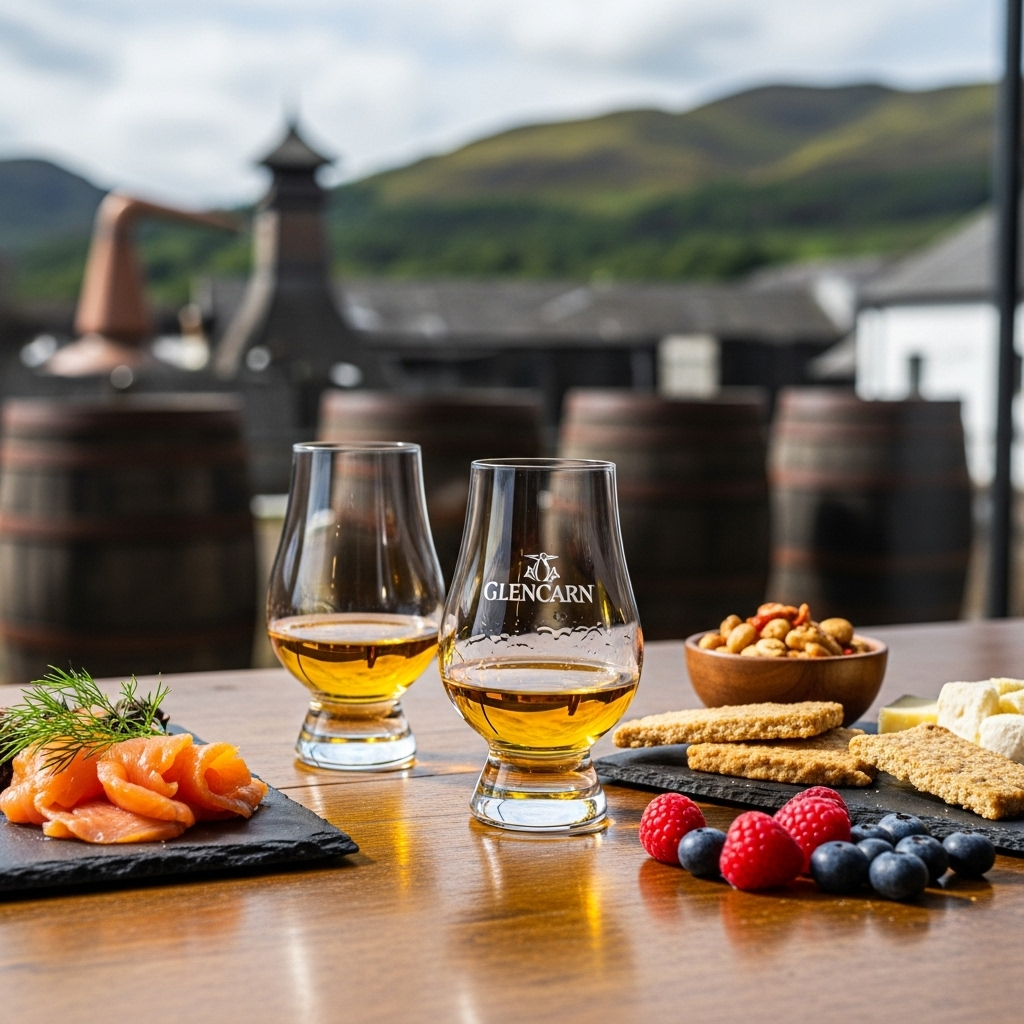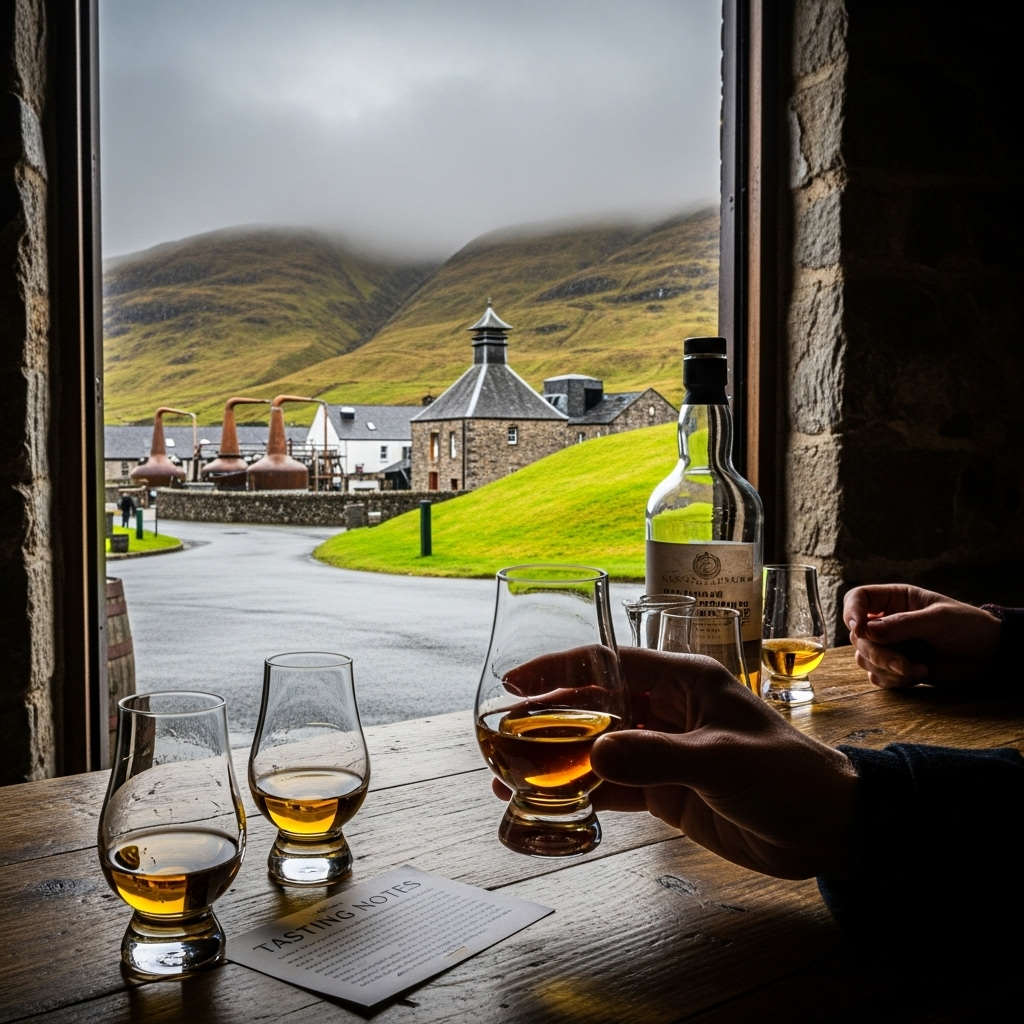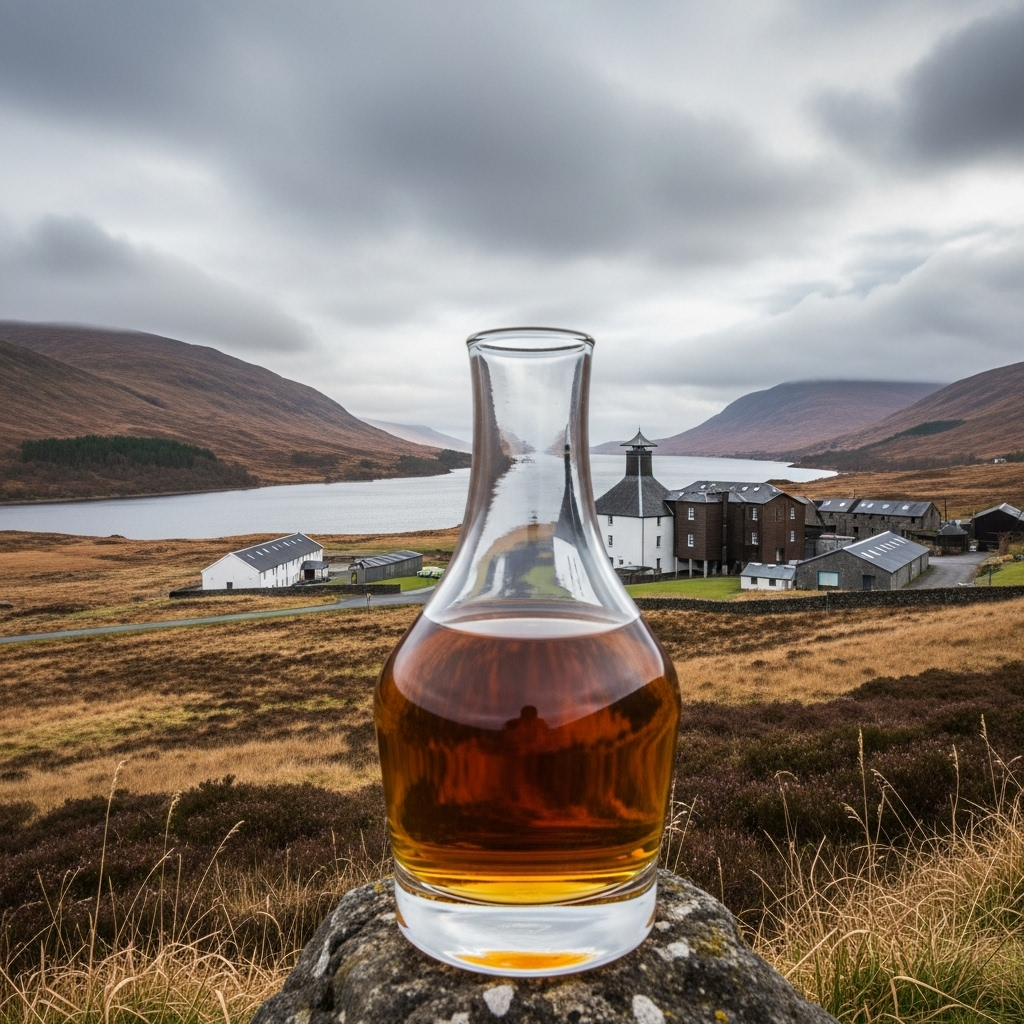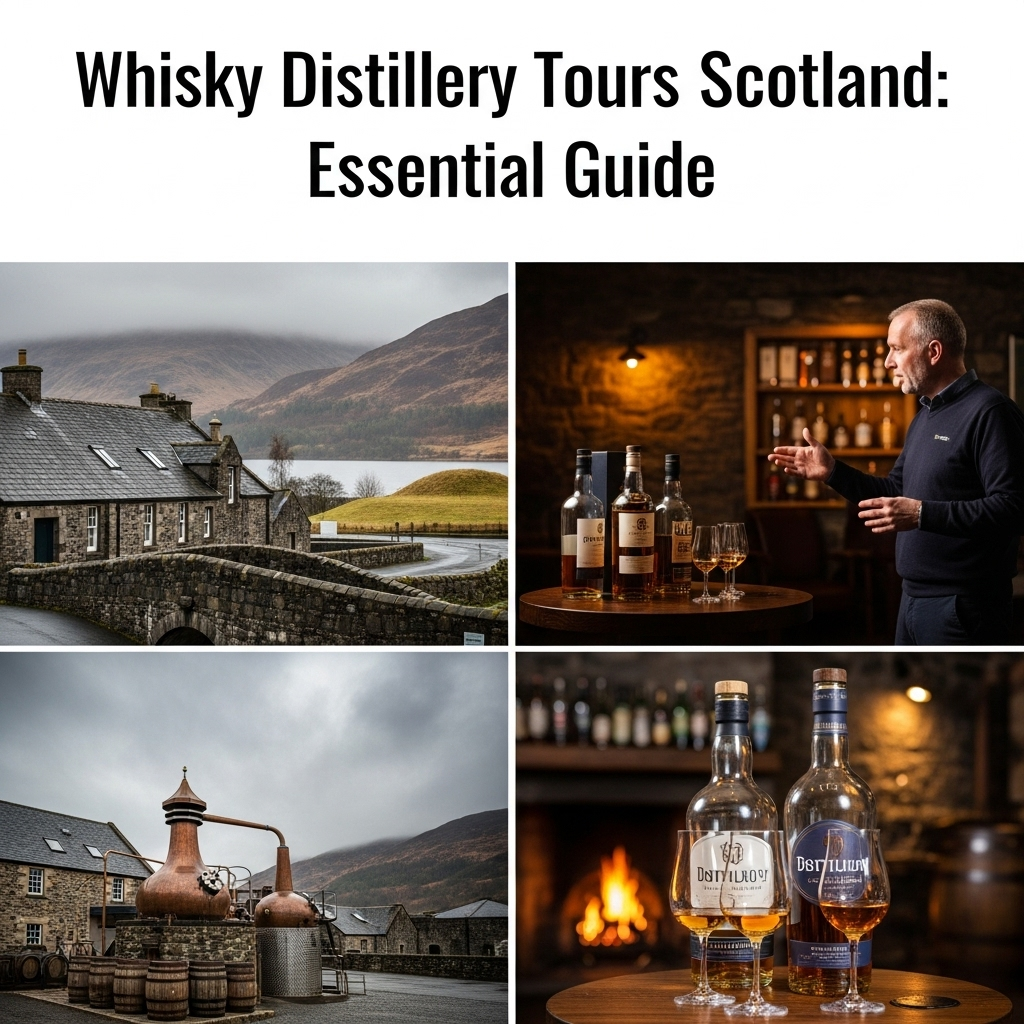Embarking on a whisky distillery tour in Scotland is an incredible way to experience the heart of Scotch. Learn how to choose the right tour, what to expect, and how to make the most of your visit for an unforgettable journey into whisky heritage.
Dreaming of Scotland’s rolling hills and, of course, its world-renowned whisky? A distillery tour is the perfect way to dive deep into the magic behind every dram. Many people find planning these tours a bit daunting, wondering where to start or what’s included. Don’t worry! This guide breaks down everything you need to know.
We’ll walk you through selecting the ideal tour, what to pack, and how to get the most out of your Scottish whisky adventure. Get ready to discover the sights, smells, and tastes that make Scotch so special!
Your Essential Guide to Whisky Distillery Tours in Scotland
Scotland is the undisputed home of Scotch whisky, with distilleries dotting its stunning landscapes, from the bustling cities to the remote islands. Taking a tour offers a unique glimpse into the craft, tradition, and passion that goes into every bottle. Whether you’re a seasoned whisky enthusiast or a curious beginner, a distillery visit promises an engaging and delicious experience.
Navigating the sheer number of distilleries and tour options can feel overwhelming. This guide is designed to simplify the process, helping you find tours that suit your interests, budget, and time. We cover everything from booking tips to enjoying the tasting, ensuring your Scottish whisky journey is smooth and memorable.
Why Take a Whisky Distillery Tour in Scotland?
Scotland’s distilleries are more than just places that make whisky; they are steeped in history, tradition, and often, breathtaking scenery. A tour offers a multi-sensory experience:
- Uncover the Craft: See firsthand the intricate process of malting, mashing, distilling, and maturing Scotch whisky.
- Taste the Difference: Enjoy guided tastings, comparing different styles and ages of whisky straight from the source.
- Soak in the Scenery: Many distilleries are located in picturesque settings, offering stunning views and photo opportunities.
- Learn the History: Hear fascinating stories about the founding of the distillery, its heritage, and its place in Scottish culture.
- Connect with Experts: Meet passionate guides and distillers who share their deep knowledge and love for whisky.
Planning Your Distillery Tour Adventure
A little preparation goes a long way in ensuring your distillery tour is everything you hoped for. Think of it like planning any special trip – getting the details right makes it more enjoyable!
1. Decide Which Region to Visit
Scotland’s whisky regions each offer a distinct character, influenced by local geography and traditions. Choosing a region can help narrow down your distillery choices.
The main Scotch whisky regions include:
- Speyside: The heartland of Scotch whisky production, known for its elegant, fruity, and often sherry-matured whiskies. It boasts the highest concentration of distilleries.
- Highlands: The largest region by area, producing a wide range of styles, from lighter, floral whiskies to robust, smoky drams.
- Islay: Famous for its intensely peaty and maritime whiskies, a must-visit for lovers of smoky flavors.
- Lowlands: Traditionally known for its lighter, smoother, and unpeated whiskies, often triple-distilled.
- Campbeltown: A small but historic region with a reputation for robust, oily, and sea-salty whiskies.
- Islands: While not officially a region, whiskies from islands like Arran, Skye, Mull, and Orkney have unique characteristics influenced by their maritime environments.
2. Choose Your Distillery and Tour Type
Once you have a region in mind, research specific distilleries. Most distilleries offer various tour experiences, catering to different interests and budgets.
Common tour types include:
- Introduction/Standard Tour: Covers the whisky-making process and usually includes a tasting of one or two core drams. Ideal for beginners.
- Masterclass/Connoisseur Tour: Features a more in-depth look at production, often with a tasting of older or rarer whiskies, or even straight from the cask.
- Behind-the-Scenes/Specialist Tour: Offers unique experiences like visiting specific production areas not usually open to the public, or focusing on a particular aspect like cask management.
- Food & Whisky Pairing Tours: Combines whisky tasting with specially selected food pairings.
- Exclusive/Private Tours: Highly personalized experiences often tailored to your interests, with premium tastings and access.
Some distilleries even offer a look at their conservation efforts, like Glenmorangie’s innovative water treatment plant, showcasing a commitment to environmental responsibility.
3. Booking Your Tour
Book in advance! This is crucial, especially during peak tourist seasons (summer) or for popular distilleries. Tours can sell out weeks or even months ahead.
- Online: Most distilleries have extensive booking sections on their official websites.
- By Phone: If you prefer a more personal touch or have specific questions, call the distillery directly.
- Through Tour Operators: Companies specializing in Scottish tours can arrange distillery visits as part of a larger itinerary.
4. Consider Transportation
If you plan to visit multiple distilleries or are staying a distance away, think about how you’ll get around. Remember, you’ll be tasting whisky, so driving yourself is not an option for the driver!
- Car Hire: Offers flexibility but requires a designated driver.
- Guided Tours/Taxis: Many companies offer dedicated whisky tours or hireable taxis, allowing everyone to enjoy the tastings.
- Public Transport: Limited in many rural distillery locations but can be an option for some accessible sites.
- Accommodation: Consider staying near the distilleries you plan to visit. Many offer accommodation or are close to charming B&Bs and hotels.
What to Expect on a Distillery Tour
While each distillery is unique, most tours follow a general structure. Knowing what to anticipate helps you relax and fully immerse yourself in the experience.
The Distillery Experience: A Typical Tour Flow
A standard distillery tour usually takes between 1 and 2 hours. Here’s a common progression:
- Welcome & Visitor Centre: You’ll typically start in the distillery’s visitor centre, where you’ll check in, perhaps browse the shop, and meet your guide.
- Malting Floor (if applicable): Some traditional distilleries still malt their own barley and will show you this crucial first step, where barley germinates to create sugars. Modern distilleries often source malted barley.
- Mashing & Fermentation: Witness the mashing process, where hot water extracts sugars from the malted barley, and see or learn about the washbacks where yeast ferments the sugary liquid (the ‘wash’) into an alcoholic base.
- Distillation: This is the heart of the process. You’ll see or learn about the stills – large copper vessels where the wash is heated and the alcohol vapour is separated and concentrated. The shape and size of the stills significantly influence the spirit’s character.
- Cask Maturation: Discover where the magic of ageing happens. You’ll learn about different types of casks (ex-bourbon, ex-sherry, etc.) and oak’s role in imparting colour and flavour over years, even decades.
- Tasting: The highlight for many! You’ll sample one or more whiskies, guided by your host who will explain the tasting notes and what makes each expression special.
The Tasting Session
The tasting is where you get to savour the fruits of the distillery’s labour. Your guide will likely provide tips on how to taste whisky effectively.
- Look: Observe the whisky’s colour, noting its depth and hue, which can suggest age and cask influence.
- Smell: Take a cautious inhale. Swirl the whisky gently in your glass to release aromas before bringing it to your nose. Try to identify different notes – fruits, spices, smoke, floral scents.
- Taste: Take a small sip. Let it coat your tongue. Note the initial flavours, how they develop, and the finish – the lingering taste after you swallow.
- Add Water (Optional): Sometimes adding a few drops of water can ‘open up’ the whisky, releasing more complex aromas and flavours.
If you’re visiting a distillery on Islay, you might be sampling whiskies with a distinct smoky or peaty character, a signature of the island. For instance, Bruichladdich Distillery offers a range of distinct Islay whiskies, from heavily peated to unpeated styles.
Essential Tips for Your Tour
Make your distillery visit even more enjoyable with these practical tips:
- Dress Appropriately: Wear comfortable shoes, as you’ll be on your feet. Layers are recommended as distillery temperatures can vary. Safety glasses are often provided, but sturdy footwear is a must if you’re walking around production areas.
- Stay Hydrated (with Water!): Drink plenty of water throughout the day, especially before and after your tasting.
- Don’t Drink and Drive: Designate a non-drinking driver or arrange alternative transport. Many distilleries offer complimentary ‘drivers’ drams’ to take away.
- Ask Questions: Guides are passionate whisky lovers. Don’t hesitate to ask anything that sparks your curiosity.
- Be Respectful: Follow all safety instructions and be mindful of the working environment.
- Pace Yourself: Especially if you’re doing multiple tastings in a day.
- Consider a Designated Driver Voucher: If you’re the designated driver, some distilleries provide a voucher for a dram to enjoy later or take home.
Notable Scottish Whisky Distilleries to Consider
Scotland is home to over 100 active distilleries, each with its own unique story and offerings. Here are a few highly regarded distilleries known for excellent tour experiences, spanning different regions and styles;
| Distillery | Region | Typical Whisky Style | Tour Highlights | Website Example |
|---|---|---|---|---|
| Glenfiddich | Speyside | Fruity, smooth, single malt Scotch. Known for its recognisable green bottle. | Explore the beautiful distillery grounds, learn about their pioneering spirit in single malt production, and enjoy a tasting of their core range. | Glenfiddich |
| Laphroaig | Islay | Intensely peaty, smoky, medicinal, and maritime. | A truly immersive Islay experience. Tours often include a walk around the peat bogs and a chance to appreciate the unique character of their production. | Laphroaig |
| The Macallan | Speyside | Rich, complex, sherry-cask driven whiskies. | Visit the stunning, state-of-the-art distillery and visitor experience. Offers various tours, including rare whisky tastings and insights into their exceptional cask management. | The Macallan |
| Oban | Highlands (West) | A delightful balance, with a hint of sea salt and a gentle smokiness. | One of Scotland’s smallest and oldest distilleries, located right in the charming harbour town of Oban itself. Offers a unique atmosphere and insight into how its location influences the whisky. | Oban |
| Glenkinchie | Lowlands | Light, floral, and grassy. Often described as “The Edinburgh Malt”. | Easily accessible from Edinburgh, this distillery provides a fantastic introduction to Lowland whisky production with its distinctive tall stills. | Glenkinchie |
Exploring these distilleries can provide a fantastic overview of the diversity within Scotch whisky. Always check the distillery’s official website for the most current tour information, availability, and booking procedures.
Beyond the Standard Tour: Unique Whisky Experiences
For those looking to deepen their whisky knowledge or seeking a more exclusive experience, consider these options:
- Distillery Stays: Some distilleries offer accommodation, allowing you to stay on-site and truly immerse yourself in the whisky environment.
- Cask Buying/Filling Experiences: For a serious investment and a truly unique souvenir, some distilleries offer opportunities to purchase or even fill your own cask. This is a significant undertaking and not for the casual visitor.
- Whisky Festivals: Keep an eye out for local and international whisky festivals held throughout Scotland. These events bring together many distilleries under one roof for extensive tastings and masterclasses.
- Hands-On Experiences: A few select distilleries might offer more hands-on elements, though these are rare and often require pre-arrangement.
The Scottish Government’s policy on Scotch whisky highlights its importance to the Scottish economy and cultural heritage, reinforcing why these visitor experiences are so cherished.
Making the Most of Your Trip
Combining your distillery tours with other Scottish experiences can create a truly memorable holiday.
- Explore the Surrounding Area: Many distilleries are located near beautiful natural attractions, historic castles, or charming villages. Plan to spend time exploring beyond the distillery gates.
- Sample Local Cuisine: Pair your whisky knowledge with Scotland’s fantastic food scene, from fresh seafood on the coast to hearty traditional dishes inland.
- Visit Other Producers: Don’t limit yourself to just whisky! Scotland also offers fantastic gin distilleries, craft breweries, and artisanal food producers.
Frequently Asked Questions (FAQ)
Q1: How much does a whisky distillery tour in Scotland cost?
A: Prices vary enormously. Basic introductory tours can start from £15-£25 per person, while more in-depth or premium experiences can range from £50 to over £200. Some very exclusive experiences can be even higher.
Q2: How long should I allocate for a distillery tour?
A: Most standard tours last between 1 to 2 hours. However, factor in time for arrival, browsing the shop, extended tasting sessions, and potential travel between distilleries if you’re visiting more than one in a day.
Q3: Can I bring my children on a distillery tour?
A: Many distilleries allow children to accompany adults on tours but they will not be permitted to participate in tastings. Some may have age restrictions for certain parts of the tour, particularly production areas. Always check the distillery’s policy beforehand.
Q4: What is peat, and will I taste it?
A: Peat is partially decayed vegetation found in bogs, used in some regions (especially Islay) to dry malted barley. This process imparts a smoky, distinctive flavour to the whisky. Whether you taste it depends on the distillery and the specific whisky being sampled. Some whiskies are heavily peated, while others are completely unpeated.
Q5: What’s the difference between Scotch whisky and Scottish whisky?
A: There is no technical difference; “Scotch whisky” is the legally protected term for whisky produced in Scotland according to specific regulations. “Scottish whisky” is essentially the same but the official, legal term is “Scotch whisky.”
Q6: How much whisky can I taste on a tour?
A: This varies based on the tour package. Typically, you might taste 3-5 different expressions. If you are the designated driver, most distilleries offer a voucher for a dram to take away with you.
Q7: Do I need to book whisky distillery tours in Scotland in advance?
A: Yes, absolutely! Booking in advance is highly recommended, and often essential



